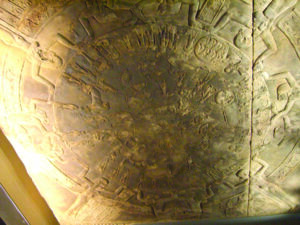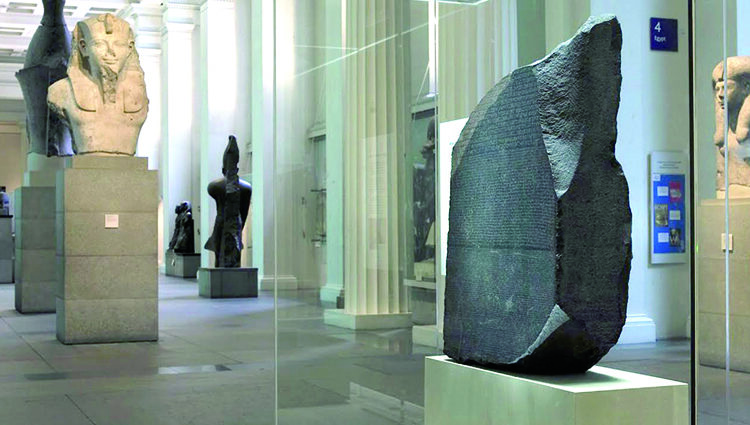SOME Egyptian archaeologists and intellectuals prepare to submit petitions to European museums in October to demand the return of the antiquities smuggled out of Egypt to Europe in the past years.
Renowned archaeologist and former minister of antiquities, Zahi Hawas, leads the new drive.
He collects signatures from fellow archaeologists, men of letters and thinkers on three petitions.
One of the petitions, he said, would be sent to the Louvre Museum in Paris to return the Zodiac of Dendera, part of the ceiling of one of the chapels at the Temple of Hathour at Dendera in southern Egypt.
“We will send the second petition to the British Museum where the Rosetta Stone is exhibited,” a local newspaper quoted Hawas as saying.
He added that the third petition would be sent to the Berlin Museum to reclaim the bust of Queen nerfertiti.
Hawas and his backers say the petitions would be the first in a long series of measures to be taken to reclaim smuggled Egyptian antiquities from Europe.
The main goal of the petitions, they say, is to spread the word in Europe and everywhere about Egypt’s right to regain its monuments.
There is, meanwhile, a ray of hope that European countries can return smuggled antiquities to their home countries.
In 2017, French President, Emmanuel Macron, told university students in Ouagadougou, the capital of Burkina Faso, that he believed that African antiquities belonged to Africa, not to European museums.
Some people viewed this as marking a shift in Paris’ position towards the foreign monuments present at French museums.
Some estimates put Egyptian artefacts smuggled by different means out of the country in the past decades at the tens of thousands.
Most of these artefacts end up at European and American museums and auction houses, reflecting the need for action on the part of Egyptian authorities and the civil society to reclaim them.
Egyptian tourism and antiquities specialists look with envy at the huge numbers of visitors these artefacts attract where they are exhibited.
The British Museum on London’s Great Russell Street contains over a staggering 110,000 Egyptian artefacts.
This is the world’s most important museum, when it comes to Egyptian antiquities outside Egypt.
Among the Egyptian collection exhibited at the British Museum is the Rosetta Stone. Discovered in 1799 AD, the stone was instrumental in deciphering ancient Egyptian writing, a move that gave the world access into many of the secrets of the ancient Egyptian civilisation.
The Louvre Museum on Rue de Rivoli in Paris also contains a large number of magnificent Egyptian pieces, including the seated writer and the statue of Ramses II.
The museum is also home to statues belonging to Amenhotep IV, Akhenaton and nefertiti. The Luxor Obelisk, one of a pair raised by Ramses II outside the Luxor Temple, stands now proudly on the Place de la Concorde, a few kilometres away from the Louvre Museum.
Over 400 ancient Egyptian artefacts are exhibited in different parts of the French capital, crying for attention and also for return to their home country.
New York contains, meanwhile, by far the largest number of ancient Egyptian artefacts outside Egypt.

The Metropolitan Museum, which is located on 5th Avenue, contains a huge collection of Egyptian pieces, about 40,000 in all.
Brooklyn Museum, which is located at the intersection of Eastern Parkway and Washington Avenue, contains seven halls that are packed with Egyptian monuments.
Berlin is also home to thousands of ancient Egyptian pieces. The German city also contains exhibitions of ancient Egyptian ruins, including those of Tal el-Ammarna and Akhenaton.
The ruins of the tomb of Tut-Ankhamun are also exhibited in Cologne.
The nefertiti bust is also exhibited in the Egyptian Museum in Berlin where it was displayed for the first time in 1924.
The Egyptian government has already started negotiations with the German government to reclaim the bust.
Egyptian authorities have also been negotiating with London to return the Rosetta Stone to Egypt for over a decade now.
Hopes are, however, pinned on Hawas’ initiative to succeed where governments failed.






Discussion about this post